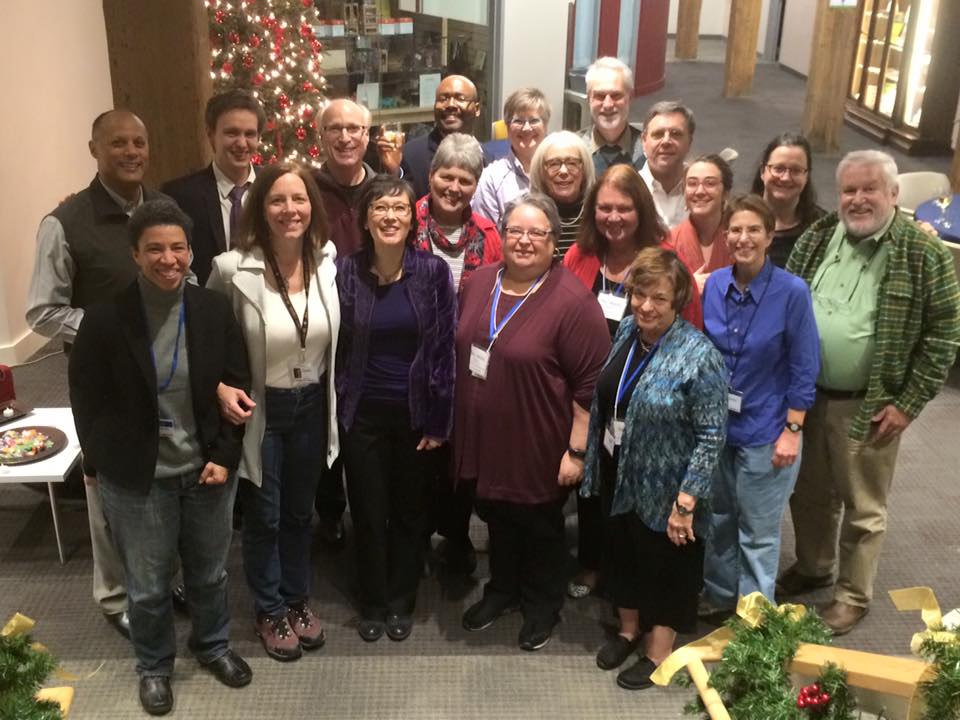As a core member of the leadership team, my role is to advocate for sustainable and effective systems and programs within the church that will serve the congregants and their loftiest goals. I have worked in substantial urban congregations for five years and have witnessed both productive and counterproductive ways of structuring how the congregation meets, worships, relaxes, learns, connects, and focuses.
Regardless of whether I am working with the landscaping committee, the board, an interfaith council, or the RE committee, I will orient and reorient us back to our ultimate goals and bring us back to the core of our mission. And, in the confusing times of conflict resolution or disagreement, my role is to hold the flame of the ministry at all times, reminding us and keeping us accountable to our covenant, our mission, and our highest call. I will draw upon these experiences to ensure that the congregation I serve is making well-informed choices. In this work, my leadership is founded in co-creation, longevity of vision, and creativity.
Leadership as Co-Creation
Co-creation is about finding the shared visions, desires, and needs of both the congregation and the minister. I am hoping that this relationship will be a partnership of sorts. There’s something beautiful that happens when we understand our roles and are able to offer ideas and perceptions that affect our ministry. I personally have experienced the divine most keenly in my relationships and expect to continue delving into this aspect of my own spirituality through my ministry.

The Ministerial Fellowship Committee, on which Rose served as Student Liaison. The invitation to participate was extended due to the quality of her own fellowshipping interview.
Leadership as longevity of vision
The congregation must also look beyond the current times and the immediate needs of the congregation and into the future of the movement and the world. Leadership must look far ahead and ask itself: What will it take to make this sustainable? What does the future of our movement hold, and what will be best for the world our grandchildren will inherit? Thinking globally and planning far into the future ensures the health of the congregation by shifting the focus from the immediate problem to the wider issue of sustainability and healthy systems. In order to build a healthy system, lay leadership must evolve, change hands, and be held accountable to structures that promote a diversity of perceptions.
And, in order for leadership to be sustainable, leaders must be given the opportunity to take breaks. I would expect there to be a structure in place for leaders to do self-care, and as a minister I hope to model a healthy work/life balance. I would encourage breaks and social gatherings for leadership, and would publicly acknowledge the leaders in the worship service. It is of utmost importance that the people who so lovingly give their time, intellect, bodies, and energy to the care of the children, the finances, the gardens, the homebound, etc. are respected and honored for their ministry and service to the community.

Rose with a group of seminarians from Union Theological Seminary. She was integral in organizing a trip with them from NYC to the “Ferguson October” activism events.
Leadership as creativity
Creativity and play are integral parts of our spiritual lives; it is my fondest dream to serve the world in the spirit of a reverent and intelligent creativity. Work-ethic increases when people enjoy and are engaged in their work, so a joyful spirit would be inextricably linked with a seriousness of purpose, longevity of vision, and healthy systems.
Nothing draws us more pointedly closer to the divine than creativity. Creation of beauty is, if anything is, a godly act. To create something from nothing is to tap into the most epic and holy aspect of humanity. It is no wonder that the Torah opens with the book of Genesis: where God is shown to be lovingly, methodically, crafting a beautiful and complex world in which the range of experience plays out endlessly. How much clearer could this scripture be? Creativity is a holy act: paint on canvas, note in silence, light from darkness, the beautiful greenblue earth bursting forth from the face of the deep where the wind swept over the black water, the baby from the womb.
I would find a great, worshipful fullness in a congregation where beauty is thriving. It will be my honor to lead a congregation where music in a church evokes the truth of our emotions and desires, my joy to preach in a sanctuary that has been made beautiful in some way, and I will do my duty by crafting my sermons with the love of the divine in mind. Art and music are a litmus test for the life of the congregation, and the creation of beauty in all its myriad of forms should be a central, underlying thread that runs through every aspect of the congregation. In order for people to be truly moved, sermons must be an artform, the sanctuary adorned, the musicians inspired, the altars decorated, the children’s spaces full of color and story, and the youth spaces marked with tradition and legacy.
